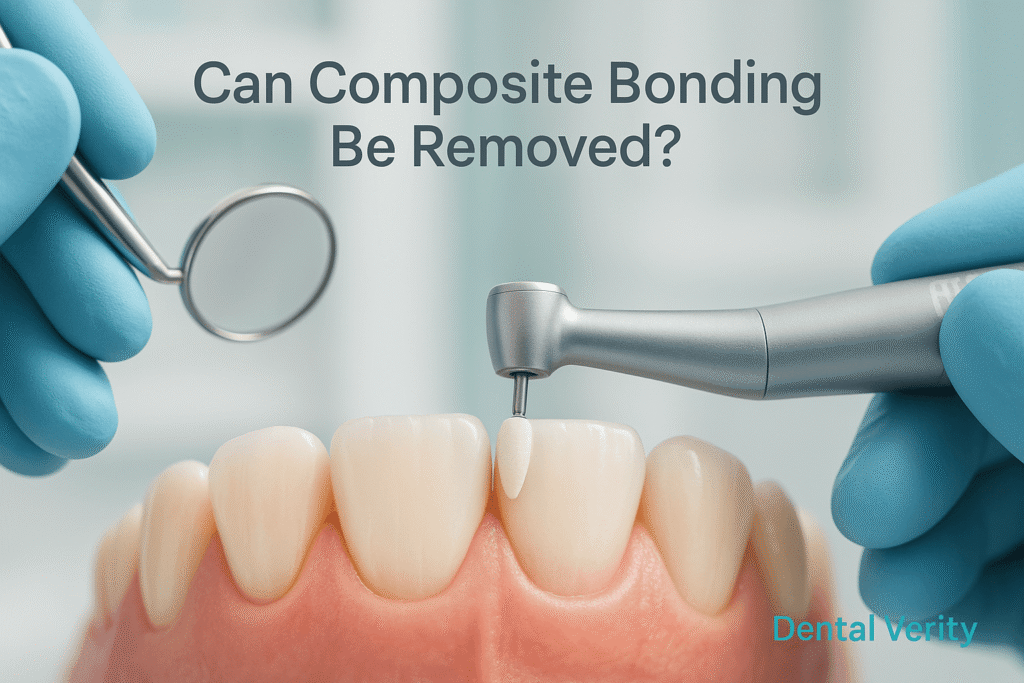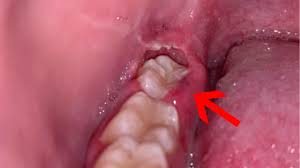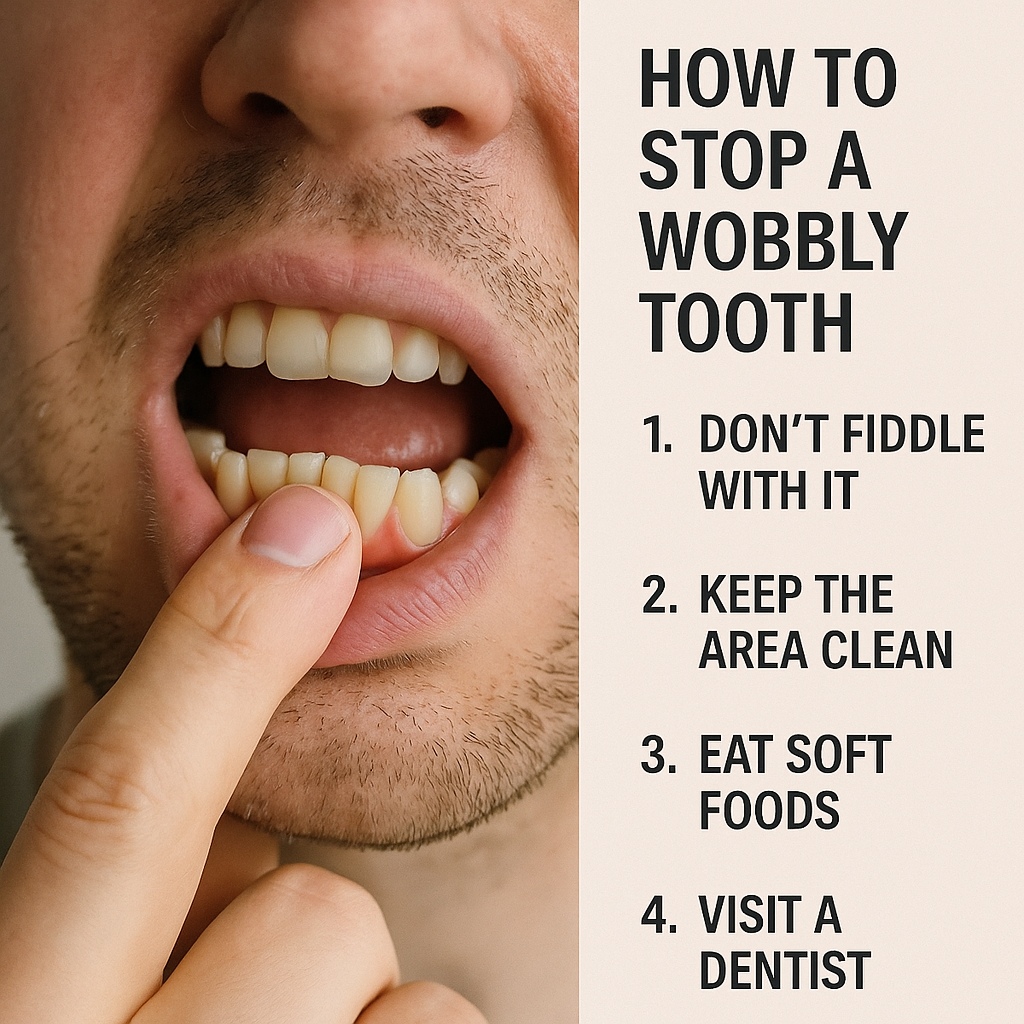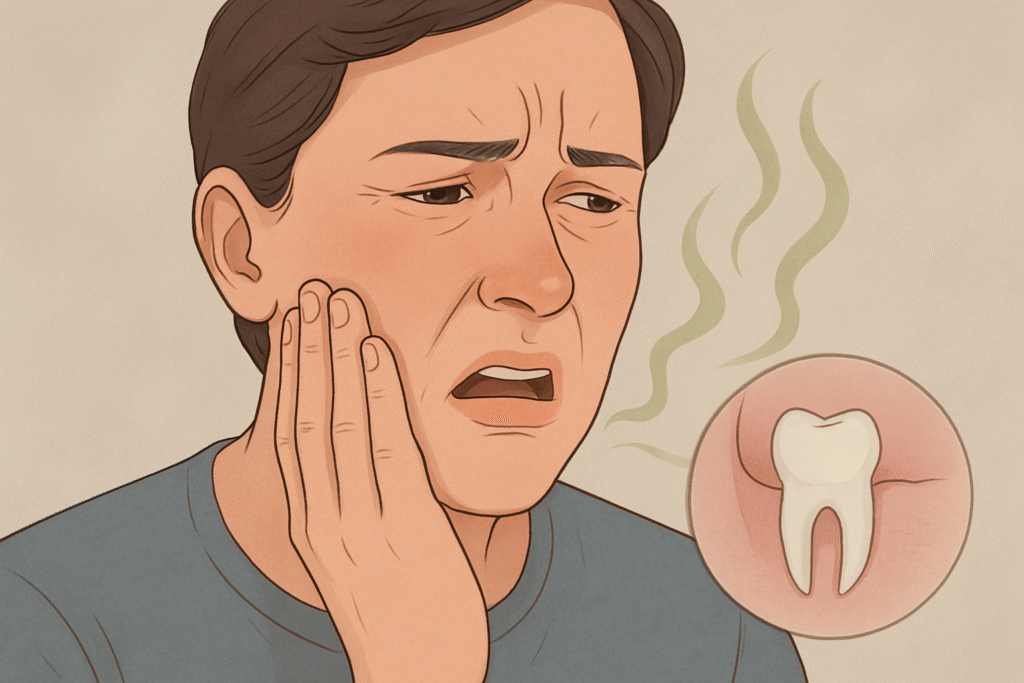
If you’ve ever wondered about composite bonding and whether it can be removed, you’re in the right place. This cosmetic treatment is often used to improve the shape, color, and appearance of your smile. But if things aren’t going as planned, whether due to discoloration, chips, or a change in aesthetic, removal is definitely a safe and effective solution.
In this article, we’ll explore the topic in depth and discuss how composite bonding works and how it affects the underlying natural teeth. If you’re considering a reversal, a reliable dentist can help you understand your options and walk you through the procedure for removal or replacement.
Why Is Composite Bonding So Popular and How Does It Work?
If you’re looking to enhance your smile, composite bonding is a great choice. It’s a non-invasive cosmetic dental treatment that uses tooth-coloured resin to improve the appearance of your teeth. Whether you have chipped, cracked, or discoloured teeth, composite bonding is a simple and effective solution.
It can help reshape, lengthen, and fill in gaps, giving you a natural-looking smile. One of the major appeals is that it preserves your natural tooth structure, unlike other treatments like crowns or veneers that require drilling or enamel removal.
Here’s how it works:
-
Composite bonding is an additive treatment that involves applying a composite material made of resin and crushed glass directly to your teeth.
-
Your dentist will first roughen the surface of your natural enamel with a mild acid, which helps the bonding material adhere to the tooth.
-
The bonding material is shaped to match your natural teeth and can be removed easily without damaging your enamel, making it reversible.
Overall, composite bonding is a fantastic option for those looking for a quick and painless smile transformation without altering the natural structure of your teeth!
Is Composite Bonding a Long-Term Solution?
Composite bonding is a semi-permanent treatment that typically lasts between 3 to 7 years, depending on factors like oral hygiene and your lifestyle habits. Things like smoking, drinking staining beverages, or even your bite pattern can affect how long the bonding holds up.
Over time, the resin can chip, stain, or wear down, but the good news is that it’s reversible. If you decide it’s time to remove the bonding, it’s easy to do, and your natural teeth can be restored.
Why Do People Choose to Have Their Dental Bonding Removed?
There are many reasons why patients may decide to remove composite bonding. Over time, teeth bonding can become discolored or even damaged. Things like staining from coffee, tea, wine, or tobacco can make the composite resin bonding look discolored, which might affect the appearance of your smile. Some people also experience chipping or damage to their bonding, or their natural enamel might chip or wear down, especially if they grind their teeth. Here are some common reasons:
-
Discoloration from staining foods or beverages
-
Chipping or damage to the bonding material
-
Unmet aesthetic goals with the shape, texture, or color
-
Desire for advanced cosmetic options like veneers or crowns
-
Bonding failure, where the material doesn’t adhere properly or detaches
If you’re unhappy with your results, it’s always a good idea to visit a cosmetic dentist who can help you explore further treatment options, like porcelain veneers, to achieve the smile you envision.
How is Composite Bonding Safely Removed?
Removing composite bonding is a delicate process that requires a licensed dental professional to perform the procedure. It’s important to use the right tools and techniques to ensure safe removal without damaging your natural enamel. The dentist might use a variety of methods, depending on the situation, to carefully take off the bonding material. Here’s how it typically goes:
-
Abrasive discs or burrs are used to polish and wear down the teeth layer, gently removing the composite.
-
Carbide drills or high-speed drills can be used to remove the bonding without harming the enamel.
-
Air abrasion technology might be used in some cases to gently remove composite resin bonding.
-
Sand-blasting nozzles or a micro-etcher function like a mini sandblaster, ensuring a smooth, effective, and gentle finish after the bulk of the bonding is removed.
Ultimately, the goal is to strip the cosmetic bonding while leaving the natural enamel untouched. A skilled dentist can help ensure that your tooth remains healthy and smooth after the removal, giving you the results you want.
Are There Any Risks Involved with Removing Dental Bonding?
When it comes to dental bonding removal, the risks are generally minimal if it’s handled by a professional. However, it’s important to understand that there can be a few potential issues if the procedure is done improperly. For example, enamel damage can occur if the removal isn’t done carefully, but this is rare. Composite bonding is not something you should attempt as a DIY project – always trust an experienced dentist to get the job done safely. Here are a few things to keep in mind:
-
Color differences may appear after removal, especially if the bonding was used to mask discoloration. The exposed tooth might look darker than expected.
-
You might see a brighter shade of enamel after the bonding removal, and it may require whitening treatments to balance the color and restore a more uniform appearance.
With the right care, these complications can usually be fixed, but it’s always better to have a professional guide you through the process to avoid any unexpected issues.
Will My Teeth Look the Same After Dental Bonding Is Removed?
Many people wonder if their teeth will look like they did before getting dental bonding. The good news is that in most cases, your natural teeth can be restored to a near-original appearance, though there are a few caveats to consider. If your bonding was done by an experienced cosmetic dentist, they will ensure that your natural tooth structure remains intact during the removal process. However, a few things could affect the final result, like minor enamel wear or colour discrepancies from natural staining or discolouration under the bonding.
If the bonding was applied with some minor abrasion or roughening of the enamel surface, your teeth may feel slightly rougher after removal, but this can be easily polished smooth. Additionally, while the enamel is non-invasive, it’s not regenerable, so some chips or unevenness may remain, but an experienced clinician can guide you in achieving the best possible outcome!
What Happens After Removing Tooth Bonding?
Once your tooth bonding is removed, the next steps usually involve some light polishing to restore your natural tooth to a smooth and natural look. The dentist may finish the process by gently smoothing your tooth’s surface to give it a polished, fresh appearance. If you decide you want to move forward with another treatment, here’s what can happen next:
-
You can reapply composite resin bonding if you want to restore the appearance or improve your smile.
-
If you’re looking for something more permanent, you might consider veneers or crowns to further enhance your smile based on your preferences.
-
Whether you decide to keep your tooth bare or explore cosmetic teeth bonding, maintaining good oral hygiene by brushing, flossing, and scheduling regular dental visits is essential for keeping your teeth in top shape.
Ultimately, your dentist will help guide you through the options based on your desired results.
What Should You Do After Composite Bonding Removal?
After bonding removal, it’s important to take some steps to keep your natural teeth looking healthy and aesthetically pleasing. Here are a few recommended steps to follow:
-
Professional polishing to restore smoothness and shine to your enamel surface.
-
If there’s a noticeable difference in the shade of your unbonded teeth, teeth whitening can help bring balance.
-
Fluoride treatments can also be a good idea to strengthen your enamel and reduce sensitivity after the procedure.
-
Ongoing hygiene maintenance is essential, so make sure you’re brushing twice daily, flossing, and keeping up with regular check-ups to ensure your teeth stay in great condition.
By following these steps, you’ll help your teeth stay as beautiful and healthy as possible after the removal of composite bonding!
Wrapping Up: Can Composite Bonding Be Removed?
If you’ve ever wondered whether dental bonding can be removed, the answer is yes. Whether you’re dealing with discoloration, chips, or simply want a new look, removal is a safe and effective procedure when done by an experienced professional. It’s reassuring to know that with the right care, you can still preserve your natural teeth and get back to the ideal smile you’ve envisioned.



